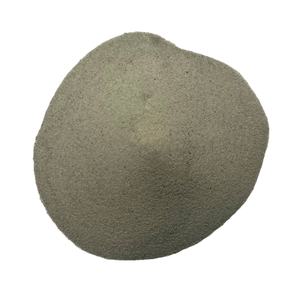Discover Premium Ceramic Products | Durability & Elegance United | Advanced Ceramics
1. Introduction
In the past 48 hours, a surge in industrial inquiries about high-temperature lab equipment has highlighted growing concerns over premature failure of silicon carbide crucibles—often due to improper handling rather than material defects. Whether you’re melting metals, firing ceramics, or conducting lab experiments, knowing how to correctly use and care for your silicon carbide crucible can prevent costly mistakes and safety hazards.

Silicon carbide crucibles are prized for their exceptional thermal conductivity, resistance to thermal shock, and ability to withstand temperatures above 1600°C. However, they’re not indestructible. This guide offers clear, actionable steps to get the most out of your crucible while avoiding common pitfalls.
2. Understanding Your Silicon Carbide Crucible
Before diving into usage, it’s crucial to distinguish silicon carbide from similar advanced ceramics. For instance, boron carbide vs silicon carbide: while both are ultra-hard, boron carbide is used more in armor and abrasives, whereas silicon carbide excels in thermal applications like crucibles.
Don’t confuse your crucible with other silicon carbide products—such as silicon carbide ceramic tiles, RBSiC silicon carbide tile blocks, silicon carbide burner nozzles, or even silicon carbide ceramic dinnerware (like silicon carbide baking dishes or casserole dishes). These serve entirely different purposes. Your crucible is engineered for extreme heat, not kitchen use.
Also note: silicon nitride is a different material altogether. Though silicon nitride ceramic items—like silicon nitride crucibles, rings, or custom heat shields—are also high-performance, they’re chemically and thermally distinct from silicon carbide. Always verify your material before use.
3. Step-by-Step Guide to Using a Silicon Carbide Crucible
3.1. Pre-Use Inspection
Always inspect your silicon carbide crucible before each use. Look for cracks, chips, or glaze flaking. Even hairline fractures can lead to catastrophic failure under heat.

- Check the interior for residue from previous melts.
- Ensure the crucible sits evenly in its holder or furnace.
3.2. Proper Preheating
Never place a cold crucible directly into a hot furnace. Thermal shock is the #1 cause of breakage.
- Start at room temperature.
- Gradually ramp up to 200–300°C over 30–60 minutes.
- Hold at that temperature for 15–30 minutes to drive off moisture.
- Then increase slowly to your target temperature.
3.3. Loading Materials Safely
Avoid overfilling. Fill only to 70–80% capacity to allow for expansion and bubbling.
- Use clean, dry charge materials to prevent steam explosions.
- Never add cold or wet metal to a hot crucible.

3.4. Melting and Pouring
Use appropriate tongs designed for high-temp ceramics. Standard steel tongs may react or slip.
- Pour smoothly to avoid splashing molten material.
- Never quench a hot crucible in water—this will cause immediate fracture.
4. Cleaning and Maintenance
After use, let the crucible cool naturally inside the furnace or on a ceramic fiber pad—never on a cold metal surface.
Once fully cooled, remove residue with a soft brush or non-metallic scraper. Avoid steel wool or abrasive pads that can scratch the surface.
For stubborn deposits, heat the empty crucible to 500°C for 30 minutes to burn off organics, then brush gently.
Store in a dry, dust-free environment. Moisture absorption can weaken the structure over time.
5. Common Mistakes to Avoid
Many users mistakenly treat silicon carbide crucibles like regular labware. Here’s what not to do:
- Don’t use it for reactive metals like aluminum without a protective coating (unless it’s specifically rated for it).
- Don’t confuse it with silicon carbide ceramic baking dishes or dinner plates—those are for food, not foundry work.
- Don’t assume all black ceramics are the same; silicon carbide black plates ceramic used in tableware lack the density and purity of industrial crucibles.
Also, avoid using crucibles made from silicon carbide tubes or pipes—these are structural components, not melting vessels. True crucibles are molded as single, dense units for uniform heat distribution.
6. When to Replace Your Crucible
Even with perfect care, silicon carbide crucibles wear out. Replace yours if you notice:
- Deep pitting or erosion on the inner wall.
- Visible cracks or warping.
- Increased heating time (indicating reduced thermal conductivity).
Don’t try to patch or glue a damaged crucible—it’s a safety risk.
7. Conclusion
A silicon carbide crucible is a powerful tool in metallurgy, chemistry, and materials science—but only if handled correctly. By following these steps, you’ll extend its life, ensure consistent results, and avoid dangerous failures. Remember: it’s not just about what the crucible is made of, but how you treat it. And no, your silicon carbide ceramic salad bowl won’t survive a 1500°C melt—keep your kitchenware and labware separate!
Our Website founded on October 17, 2012, is a high-tech enterprise committed to the research and development, production, processing, sales and technical services of ceramic relative materials such as How. Our products includes but not limited to Boron Carbide Ceramic Products, Boron Nitride Ceramic Products, Silicon Carbide Ceramic Products, Silicon Nitride Ceramic Products, Zirconium Dioxide Ceramic Products, etc. If you are interested, please feel free to contact us.
